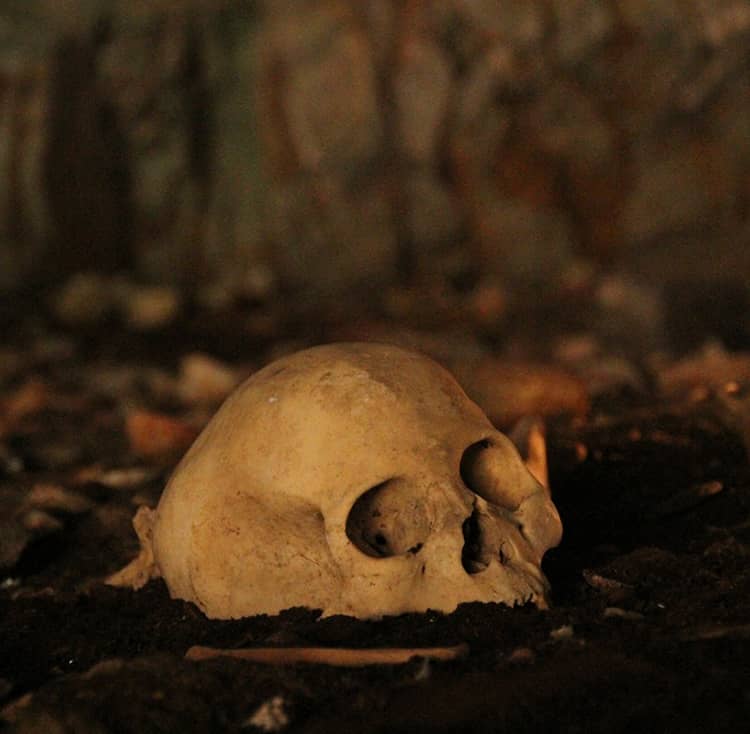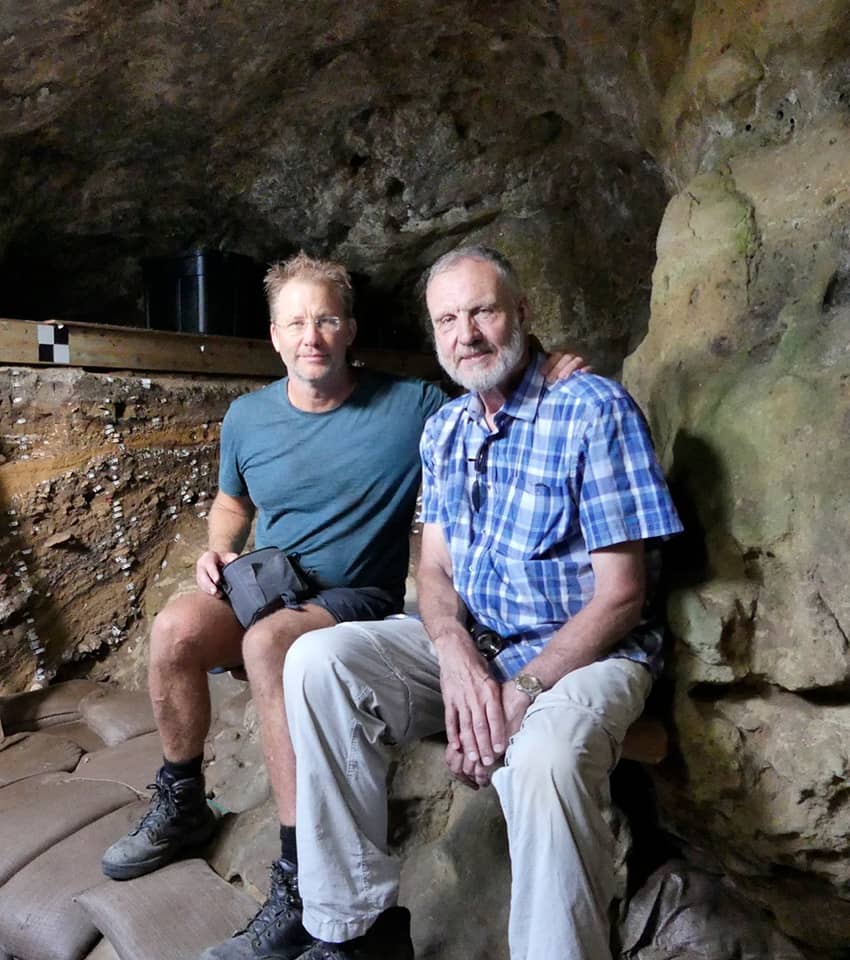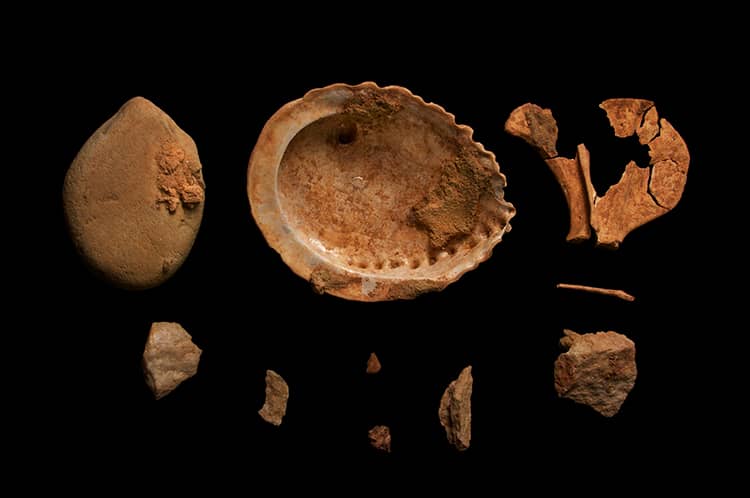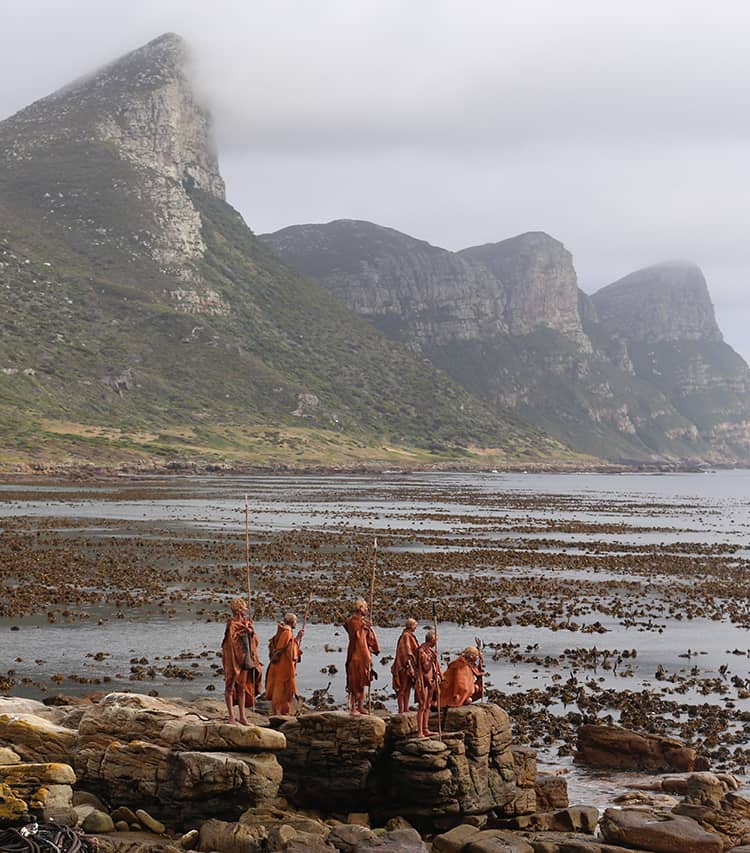June 3, 2023
Original Wild Swimmers: Unearthing the Origins of All Human Creation
Craig Foster
Some years ago, I was kayaking and swimming along a rugged part of Cape Town’s coast. The sun blazed overhead, the sea frothed against rocks, and behind a stand of kelp, I discovered a cave. Battling against a strong surge, I timed my entry, and crawled into a dark, cool world ripe with the smell of salt and primordial plant life. I ventured further into the cave, and there it was: a full human skeleton lying sprawled on the rock-littered floor.
At first, I thought it belonged to a person who may have recently drowned. But then I examined the teeth. The wear pattern and lack of any sugar-induced dental decay told me this was one of the last wild humans that had lived on our coast. I was looking into the eye sockets of the last in line of the greatest lineage of humans, who had an unbroken 120,000-year relationship with this ocean and coast. I was deeply moved to be sitting next to this wild ancestor among his or her last meals.
“I was looking into the eye sockets of the last in line of the greatest lineage of humans, who had an unbroken 120,000-year relationship with this ocean and coast”

Original wild human skull, discovered by Craig Foster. Photo credit Craig Foster
I was fortunate to meet leading Southern African archaeologist Professor Christopher Henshilwood, who became my friend and mentor in human origins. He introduced me to his wife, Dr Karen van Niekerk, director of excavations at Blombos Cave and Klipdrift Shelter, South African archaeological sites that have yielded incredible evidence of symbolism and cognition in early modern humans. For years, with their guidance, I tried to understand the power of what now makes our wild mind tick, and how this might be connected to the Great African Seaforest and our Sea Change Project.

Professor Christopher Henshilwood and Craig Foster sitting together at Blombos cave, one of the richest middle stone age sites in the world.

Photo credit Craig Foster
These early cognitively advanced, highly perceptive humans may have been the first known human swimmers and divers, judging from the size of the abalone they collected. Our relationship with this coast and this kelp forest goes back into deep African time and is simultaneous with the rapid expansion of the abilities of the human brain to behave like we do today. It’s astounding to think this was 100,000 years ago.
Africa, and particularly Southern Africa, is the acknowledged cradle of human culture, with some inventions occurring here 60,000 years before they appeared in Europe. Southern Africa is one cultural home of our human species, Homo sapiens. It is a welcoming mat for all people across the globe, its ancient wildness intoning: “Mother Africa! Welcome home!”. We can take pride in knowing we are one species — that Africa is where all humans began — and that we can all share in this glorious evolutionary context.
After a decade of working with Chris and his team of paleo scientists, it’s very exciting to be hosting an exhibition with Sea Change in the breathtaking SANParks Table Mountain National Park. It’s a great way to honour that wild ancestor I came upon in the remote cave and to pay tribute to all our African ancestors who paved the way for everyone alive today.
We are all African by nature. We incubated here for 80 percent of our time on Earth, before eventually migrating to the rest of the world, carrying the power of symbols with us. Africa is our original home. This is the Mother Continent, the Mother Sea. Mother Africa.

Photo credit Craig Foster
The Buffelsfontein Centre is located inside Cape Point Nature Reserve and entrance to the exhibit is free (once park entry fees have been paid).
The centre is open Monday-Sunday from 08:00 to 17:00.
Download the San Parks Cape Point Brochure
Special mention to Co-Curator Petro Keene, Carl Miller, Lachlan Matthews and all the artisans involved in putting the exhibition together. A huge thank you to SANParks for their support.